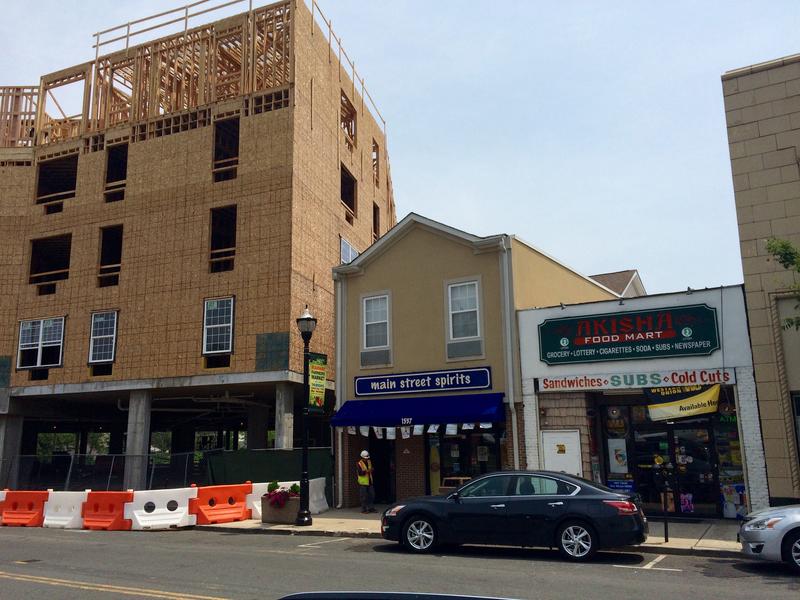
Like many artistic young people who grow up in New Jersey, Mackenzie Walsh always planned on moving to New York City. But recent changes in her hometown of Rahway have made the 23-year-old reconsider her plans.
“I get so excited when I see creative people my age around here,” said Walsh, a writer who works as a hostess at the new Meatballs and Brews on Rahway’s Main Street. “I’m just like: ‘Oh my god! They’re here!’ And physically going to New York costs so much money, so I hang out here every weekend. You can always see me.”
Walsh’s mom also worked at Meatballs and Brews back when it was an Irish pub named Flynn’s. Now the bar serves up craft beers to 20-somethings who play on a vintage Pacman machine while they wait for a table.The changeover indicates a broader shift in Rahway, and in other towns across New Jersey that are reversing years of neglect.
Nestled between the Parkway and the Turnpike, Rahway features an elevated rail line, clapboard storefronts, and a newly-renovated vaudeville theater that dates back to the 1920s. With the advent of malls and big box stores in the 1960s and 70s, once-bustling downtowns like Rahway’s fell into a cycle of divestment and disrepair. Then Merck, one of the world’s largest pharmaceutical companies, moved its headquarters away in 1990.
“If you said ‘Rahway,’ people in New Jersey said ‘Merck’,” said Peter Primavera, Executive Director of Downtown New Jersey, an organization that’s been advocating for New Jersey’s urban centers for 25 years. “When Merck decided to move their manufacturing facilities, people were very, very nervous about what would happen to Rahway. Taking a factory town from where it was and getting it to believe it could be something else was a long process, and it took an entire community.”
Downtown New Jersey recently held its annual conference in Rahway, where town leaders from across the state met with experts like Primavera in counseling sessions called “Dr. Downtown” to get advice on how to fix their own Main Streets.
Today, high-rises in various stages of construction grace Rahway’s skyline. The towers are 97 percent full, and brim with young professionals who commute to Manhattan by train in 35 minutes.
Rahway isn't the only New Jersey town that’s managed to draw residents back downtown. An analysis by the Bloustein School of Planning and Public Policy at Rutgers found that populations in New Jersey counties that surround Manhattan have grown since 2000, and especially in the 2010-2013 period. Meanwhile, populations in the exurbs — those counties furthest from New York City — have decreased, reversing the pattern of suburban population growth for the first time since World War II.
New Jersey’s small cities have started to capitalize on a broader shift away from suburban sprawl and towards “live/work/play” spaces--pedestrian-friendly areas accessible by public transportation.
“It’s happening,” said Bob Goldstein, President of Downtown NJ. “The trend in the last seven years is that fewer vehicle miles have been driven, each year diminishing.”
Part of that success lies with attracting the millenial generation, those born just before the turn of the century. According to a Nielsen study, a 62 per cent of millennials want to live in urban areas rather than suburban ones, the highest rate of any generation yet.
Rahway is specifically targeting creative young people like Mackenzie Walsh by building an apartment complex with subsidized rents for artists along with a solar-powered artist’s village, which has a performance space and collects rainwater for daily use. Rents collected from both projects will then fund new development ventures, according to Mayor Samson Steinman.
“The city of Rahway was a big artists’ community way back in the 20s,” said Steinman. “It’s the creative class. They come in and they bring a vibrancy, they bring creativity, and they bring a vibe to the downtown.”
